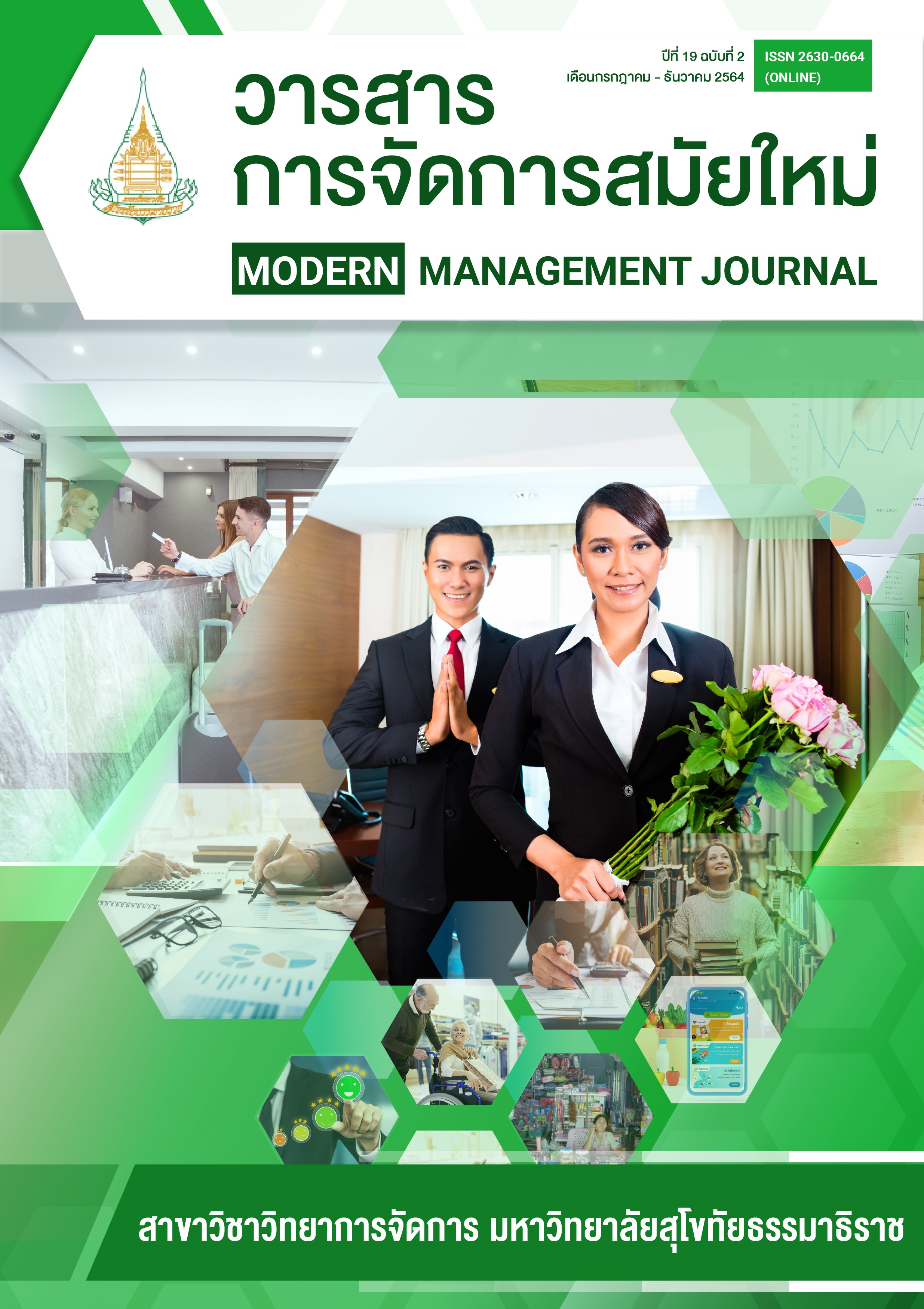Promoting Cultural Tourism in the Thai Way of Life along with Canal in Nonthaburi Province
Keywords:
Thai Cultural Tourism, Water-based Tourism, Klong Aomnon, Nonthaburi ProvinceAbstract
The purposes of this participatory action research were: 1) to study the potential of Klong Aomnon areas towards cultural tourism in the Thai way of life along with canal in Nonthaburi Province; 2) to develop the personnel competency in cultural tourism; and 3) to develop cultural tourism products/routes on the Thai way of life along with the canal. The purposive criteria was applied to determine the target population, which consisted of 1) the stakeholders of Thai cultural tourism along canal in Nonthaburi province, including community people and government representatives, and 2) tourists. The research instruments used for data collection were interviews, questionnaires, and checklists. Data analysis consists of content analysis, Descriptive statistics, and Paired t-test.
The finding indicated that 1) the tourist site management to have the potential to accommodate tourists, including accessible facilities for all, was necessary to educate the community people to realize the importance of canal water resources and physical resources conservatives along the canal to maintain identity. 2) The development of personnel competency in cultural tourism along canal was to design the community spirit of service. Service providers should be developed to have the potential to serve tourists by recognizing the role of being a good host, and able to manage Thai cultural tourism effectively. 3) The Cultural Tourism Product development was defined as a designing the tourism route with cultural highlights in tourist destination. The route was emphasize on cultural tourism activities where all groups of tourists can perceive the value and participate in. In addition, communities should continuously evaluate tourists' satisfaction towards Cultural tourism products.
References
Buhalis, D. (2000). Marketing the Competitive Destination of the Future. Tourism Management, 21 (1): 97-116.
Grayson, K., & Martinee, R. (2004). Consumer Perceptions of Iconicity and Indexicality and their Influence on Assessments of Authentic Market Offerings. Journal of Consumer Research, 31(2): 296-312.
Hargrove, C. (2014). Cultural Tourism: Attracting Visitors and Their Spending. National Cultural Districts Exchange Report: Americans for the ARTS, Washington, D.C. https://www.americansforthearts.org/
Jennings, G. (2006). Water-Based Tourism, Sport, Leisure, and Recreation Experiences. In Water-Based Tourism, Sport, Leisure, and Recreation Experiences; Jennings, G., Ed.; Butterworth-Heinemann: Oxford.
Lau, R.W.K. (2010). Revisiting Authenticity: A Social Realist Approach. Annals of Tourism Research, 37(2), 478-498.
Martin, K. (2010). Living Pasts: Contested Tourism Authenticities. Annals of Tourism Research, 37(2), 537-554.
McKercher, B., & Cros, H. (2002). Cultural Tourism: The Partnership between Tourism and Cultural Heritage Management. New York: Haworth Hospitality Press.
Pike, S. (2008). Destination Marketing: An Integrated Marketing Communication Approach. Butterworth-Heinmann, Burlington, MA.
Prentice, R. (2001). Experiential Cultural Tourism: Museums and the Marketing of the New Romanticism of Evoked Authenticity. Museum Marketing and Curatorship, 19(1): 5-26.
Richards, G. (1996). Cultural Tourism in Europe, Wallingford, CAB International.
Published
Versions
- 2022-02-01 (4)
- 2022-02-01 (3)
- 2022-02-01 (2)
- 2022-01-02 (1)
How to Cite
Issue
Section
License
Copyright (c) 2022 Modern Management Journal

This work is licensed under a Creative Commons Attribution-NonCommercial-NoDerivatives 4.0 International License.


